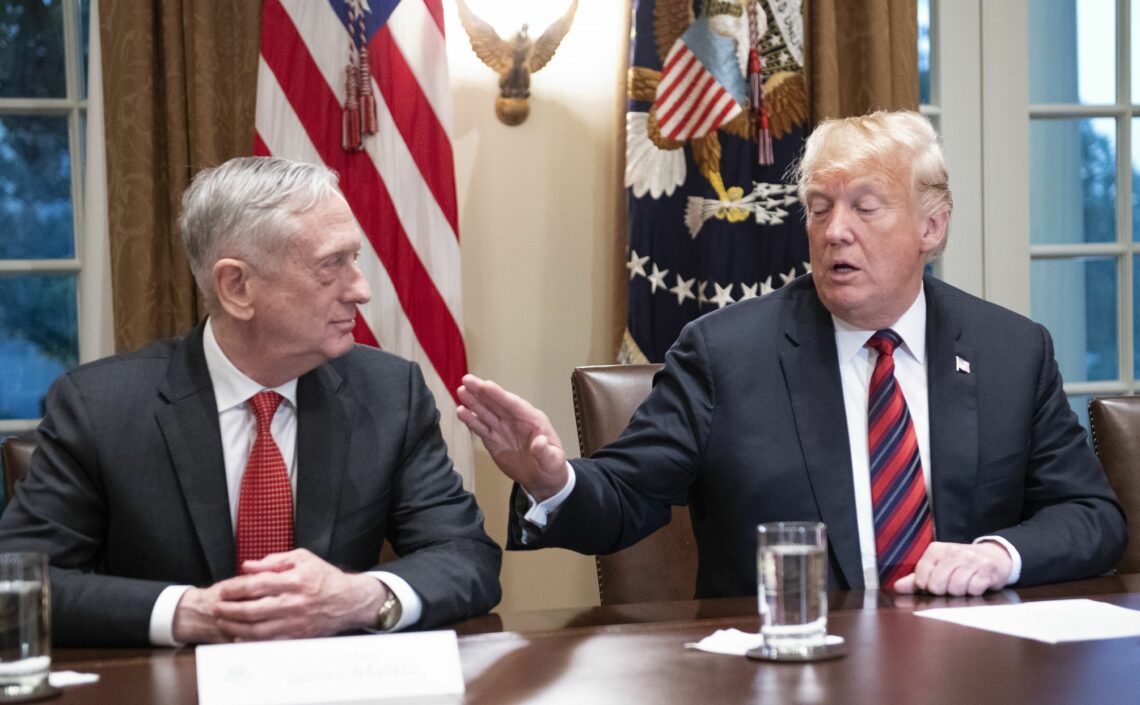U.S. defense spending: A bellwether for Trump’s security policy
The Trump administration has signaled significant increases in defense expenditures for 2018 and 2019. However, to sustain its readiness, the U.S. military needs much more. The White House faces a difficult political landscape that will likely resist further rises in defense spending.

In a nutshell
- Without big changes, the U.S. military will not maintain its strength
- The Trump administration has secured two years of budget increases
- It currently plans to keep spending flat, in the face of a difficult political landscape
The debate over the United States’ budget for fiscal year 2020 could be an important turning point for the country’s security policy. The administration of United States President Donald Trump built its National Security Strategy, released in 2017, on the presumption of “peace through strength” – a strong military capable of protecting vital American interests in Europe, the Middle East and the Indo-Pacific region. The administration signaled its intent to field a robust military with significant increases in defense spending – of $81.2 billion in 2018 and of $7.9 billion in 2019.
However, without significant changes, the U.S. will not be able to sustain readiness and modernization over time. In turn, the administration will find it increasingly difficult to provide adequate forces to support its strategy. That could create weaknesses America’s major competitors could exploit.
‘Peace through strength’
The adequacy of U.S. defense forces is measured by their capacity to provide trained and ready troops, fund current operations and modernize. Defense spending rose significantly to account for increased operations after the terrorist attacks on September 11, 2001. Combat deployments, however, have been significantly reduced over the last decade.
The defense establishment remains stressed. The Department of Defense struggles to field expensive new systems, including attack aircraft, aircraft carriers and nuclear submarines, whose procurement was stretched out and delayed because of funding constraints. The armed forces are working to reverse declining readiness resulting from both excessive deployments and reduced training. Further, defense has suffered from federal funding through continuing resolutions and supplemental appropriations rather than through building annual appropriations, which is more predictable and allows for more efficiency in spending.
The Trump administration came into office determined to address the fiscal challenges facing the nation’s armed forces.
Each year, The Heritage Foundation publishes the Index of U.S. Military Strength, which uses fixed benchmarks to evaluate the U.S. armed forces’ ability to protect vital interests, accounting for missions, major competitors, the operating environment and capabilities of allies, as well as the size, readiness and capability of American forces. When the Trump administration assumed office, the index rated the U.S. military as “weak” overall.
The Trump administration came into office determined to address the fiscal challenges facing the nation’s armed forces. The increases in the 2018 and 2019 budgets had helped address some readiness shortfalls. As a result, there were slight improvements in the scores given in the 2019 edition of the index. Nevertheless, establishing a more robust military force to match the requirements in the National Security Strategy demands sustained increases in defense spending. In 2017, Secretary of Defense James Mattis explained the budget requirements for the next five years (through fiscal year 2023) to lawmakers in a Congressional hearing:
[W]e’re going to have to increase – I would think it’s going to take a budget that’s probably up around five percent growth – real growth in order to get towards where we want to go[,] and not [less than] three percent will not do it. Three percent growth will not suffice, I’ll tell you that. It’s going to be up over five percent.
Political opposition
The administration’s current budget projections, however, only incorporate inflationary-level growth from 2020 onward. So even the administration’s own budget planning does not account for the growth necessary to sustain the current defense establishment.
Future budget projections are political statements and do not necessarily reflect how the president’s proposal will look or what Congress will appropriate. Clearly, the administration believed it had the political muscle to obtain defense increases in the near term and, at least for now, settled on projecting flat spending thereafter – even though that created a clear mismatch between requirements and resources.

The five-year budget projection reflects the difficult political environment the administration expects to face. National elections are scheduled for November, which could well shift which political party controls Congress. Key leaders in the Democratic party, including Representative Adam Smith, its ranking member on the House Armed Services Committee, have declared that they do not support higher military budgets and see fiscal year 2019 as the “high-water mark” in defense spending.
Even if Republicans manage to maintain control of one or both houses of Congress, the margins of control will be small, and it will be difficult for the administration to dictate budget priorities. It is possible that Congress will return to funding through continuing resolutions rather than passing budget bills in either fiscal year 2020 or 2021. This would almost assure that defense spending would be flat through the remaining years of President Donald Trump’s first term.
Within the Republican party, there is also increased concern about the size of the U.S. budget deficit and a strong desire to reduce federal spending overall. This effort could pit Republicans against Republicans, as defense hawks argue for larger Pentagon budgets and budget hawks demand cutting spending across the board.
President Trump has begun setting out his deficit reduction plans and asserting his leadership over the various wings of his own party. Even if he manages to line up the Republicans behind him with a promise of less spending while protecting defense, he will still have to contend with an opposition party that will cooperate even less as the 2020 presidential election draws nearer.
Even if there is a willingness to spend more, the U.S. must account for the Budget Control Act (BCA), which sets limits on overall federal expenditure. Fiscal years 2020 and 2021 are the last two that the BCA will be in force. The defense caps have been renegotiated every two years, and these should not be an exception. Still, the negotiation must take place.
The world is watching
Foreign affairs only support the president’s budget-making plans. After two years in office it is clear that President Trump is no isolationist, nor is he leading the U.S. off the world stage. On the other hand, he continues to eschew new defense commitments that would require significantly increased deployments. Yet the administration continues to look at additional defense initiatives, including new bases in Europe, expanded missile defense and nuclear modernization.
America’s allies and strategic partners are closely observing U.S. defense trends.
The administration also knows America’s adversaries, like China, Iran and Russia, are assessing Washington’s plans and President Trump’s rhetoric. Likewise, America’s allies and strategic partners are closely observing U.S. defense trends. As the U.S. demands others do more to contribute to the common defense, those countries are watching to see whether Washington is willing to sustain its own defense rebuilding effort.
Scenarios
Regardless of the results of the election, the most likely scenario is that the Trump administration’s defense rebuilding strategy will stall over the next two years. The Trump team is likely to build its planning around extending the administration into a second term and resuming increases in future years. It is very unlikely that the U.S. will change its strategy.
That said, it will be crucial to see how the administration attempts to sustain momentum in its “peace through strength” program over the next two years. The Pentagon will likely continue trying to increase levels of readiness and sustain current major acquisition programs. Further, the U.S. will be averse to curbing operational deployments in key strategic areas such as the South China Sea, Afghanistan, the Middle East and NATO. On the other hand, new initiatives such as expanding overseas force structures and major new acquisitions could well be pushed to beyond 2022.







